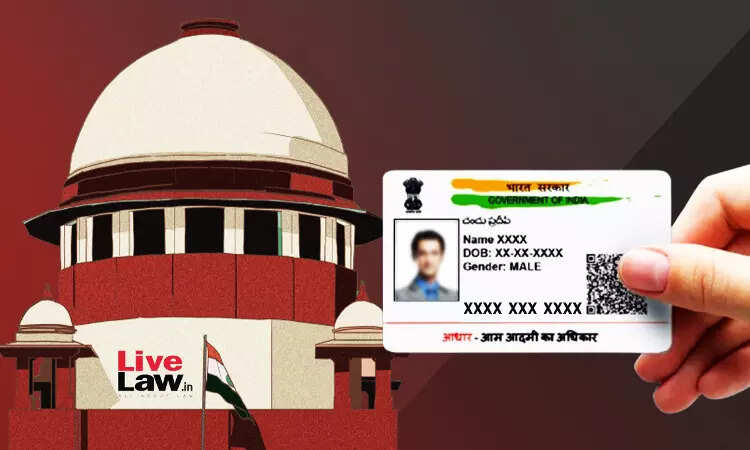The Supreme Court's Decision: Aadhaar Cannot Be Used as Evidence of Age in Cases of Accident Compensation

The Punjab and Haryana High Court had previously made a decision on the use of Aadhaar cards as proof of age in compensation claims relating to traffic accidents. On Thursday, the Supreme Court of India overturned that decision, which was a landmark result. This decision was made as a result of a tragic incident that occurred in 2015. The incident included a guy who was killed in a car accident.
When it came to determining the deceased person's age for the sake of compensation, the most important question was how to do so accurately. In the beginning, the Motor Accident Claims Tribunal (MACT) in Rohtak had granted a compensation amount of ₹19.35 lakh. However, the High Court subsequently reduced that amount to ₹9.22 lakh. The man's Aadhaar card, which indicated his age as 47, was the deciding factor in the determination made by the High Court. On the other hand, the family of the deceased person called this into question, pointing out that his actual age was 45, which was confirmed by his school leaving certificate.
The family was granted a favourable ruling by the Supreme Court, which was presided over by Justices Sanjay Karol and Ujjal Bhuyan. The court emphasised the importance of providing credible proof of age. A reference was made by the justices to the Juvenile Justice (Care and Protection of Children) Act, 2015, which makes it abundantly apparent that the date of birth that is included in official documents such as school certificates should be used to ascertain the age of an individual. This legislation takes precedence over the Aadhaar card, which, albeit being helpful for proving identity, does not serve as a legal evidence of age.

The court also referred to a circular issued by the Unique Identification Authority of India (UIDAI), which indicates unequivocally that although Aadhaar can verify an individual's identity, it should not be relied upon for verifying an individual's age. When it comes to concerns of compensation, where financial justice is at stake, this explanation is extremely important since it reaffirms the idea that legal requirements must be satisfied when establishing critical characteristics such as age.
The repercussions of this decision are not limited to the scope of this particular case. In the context of legal matters, it establishes a precedent that has the potential to affect future claims and emphasises the significance of utilising papers that are correct and can be verified. The ruling made by the Supreme Court guarantees that the rights of persons are safeguarded and that compensation is commensurate with the actual nature of the circumstances underlying terrible incidents.
This decision has taken a lot of attention not only because of the legal implications it has, but also because of the impact it has on families who are trying to get justice for their loved ones. After a life has been cut short, the last thing that bereaved families want is for there to be more confusion over compensation owing to disagreements regarding documentation. By placing such an emphasis on the school leaving certificate as a major source for age verification, the Supreme Court has established a road that is both more transparent and more trustworthy for instances that are comparable in the future.
Ultimately, this decision from the Supreme Court highlights the need of correct documentation in the course of legal processes, as well as the requirement of having a comprehensive awareness of the rules that regulate age verification. It is beyond a doubt that having a legal system that places a priority on trustworthy evidence will serve as an essential source of assistance and justice for families as they negotiate the frequently complicated aftermath of road accidents.
--
